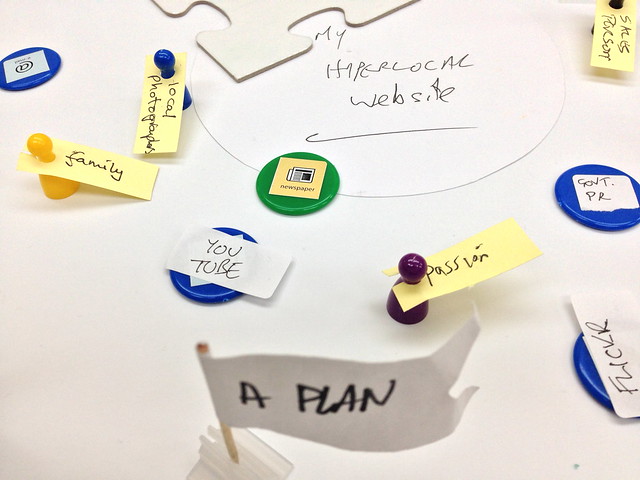Best to have a quick glance at the set of to give you an idea of what I’m talking about below.
Members of the Creative Citizens research team (myself, Jerome Turner and Andy Williams) attended an ‘unconference’ () on Saturday 29 September 2013, staged by our project partners Talk About Local. Having attended many rather more formal academic conferences throughout the year, this made for a a refreshing and invigorating change. Attendees at the Middlesborough event (hosted at ) were drawn largely from the hyperlocal practitioner community with a sprinkling of members of the locally-based arts community.
Like the other strands in the Creative Citizens project we plan to make use of an asset-mapping methodology which aims to support community groups to consider what digital, human, physical or relational ‘assts’ they have to support their endeavour. It’s effectively a tool for reflection. At #TAL13 I wanted to pose the question:
‘What assets does your hyperlocal have?’
Initially I thought I might ask if it were possible to asset-map an ‘ideal’ or ‘sustainable’ hyperlocal, but that might result in participants trying to second-guess what I was implying by those terms so I left it more open and asked them to imagine their own hyperlocal operation in the centre of the map.
The detail of the method is outlined in a post from last year by Catherine Greene. Emma Agusita discusses how she used it with a community media organisation in Bristol.
In practical terms, participants put whatever they think more important closer to the centre of the map. Different shaped objects represent different things (spaces, infrastructure, media, groups and businesses, people, other). We had about six people contribute to our hyperlocal ‘map’ (there was a bit of drifting in and out). Here’s my take on what we found:
You don’t need an office, a nice café is handy, but a pub is essential.
Access to broadband was seen as essential but it didn’t necessarily matter where that access was. Cafés and pubs are good for “wifi, events, conversations” and it’s handy to have a “pub landlord who likes to be local hub of odd happenings”.
People with passion and a degree of skill are vital.
From “Paul, the web guru” to “John, our eager photographer”, you need people who have time to keep your hyperlocal ticking over technically and content-wise.
Public sector connections provide content.
It’s fair to say that many public sector organisations, from the police to local councils, now treat hyperlocals the same way they treat mainstream media. Even where they don’t, the degree to which the public sector has taken to Twitter means that hyperlocals are never short of access to stories or quotes.
Revenue matters / doesn’t matter.
This was placed both near the centre and at the edge of the map by two different people. We had Simon Perry from On the Wight with us who talked about needing to get serious about income-generation but others were less concerned about making money from their operation (why this was the case wasn’t made clear). It was noted that the same person who places revenue at the edge also placed ‘passion’ near the centre.
Other people’s stuff on the Internet provides content.
By which I mean, Creative Commons licensed images and Youtube. Several people mentioned trawling such sites for local images and discussed the value they create for them.
We don’t need apps.
In fact there were quite a lot of the ‘media’ icons placed around the edge. This partially represented a rejection of the need to engage with existing media but also a notable lack of interest in bespoke apps.
Thanks to all those who took part in the session. Any thoughts on this, let me know.

